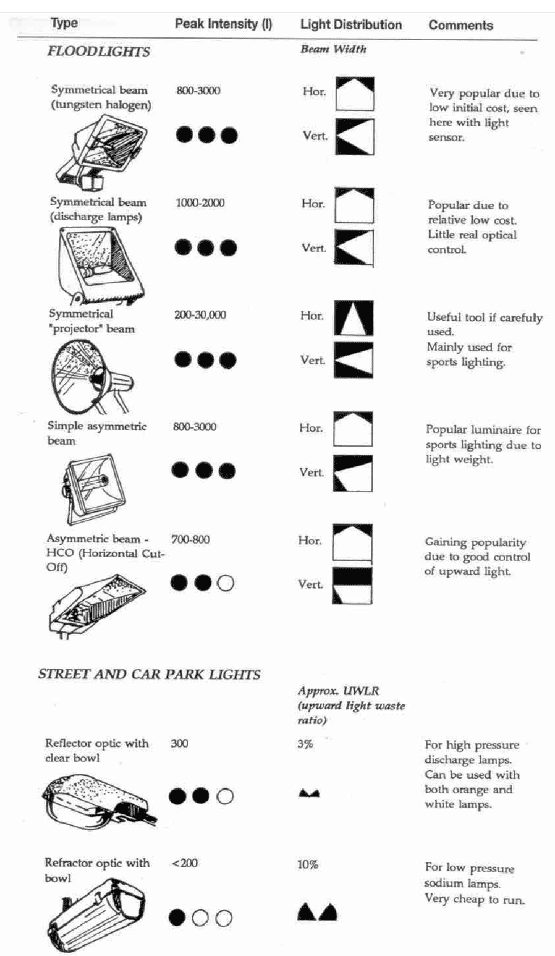Nuisance provisions of the Public Health etc (Scotland) Act 2008: guidance
Procedural guidance on the statutory nuisance provisions outlined in the Public Health etc. (Scotland) Act 2008.
SECTION 1 - GLOSSARY
Light
(or luminous flux) is electromagnetic radiation visible to the eye and is measured in lumens (lm)
Efficiency
of a light is measured in lumens per watt (lm/W)
Illuminance
is a measure of the amount of light falling on a surface and is measured in lumens per square metre or lux. The illuminance of direct sunlight is around 100,000 lux, normal daylight is 5,000 to 10,000 lux and moonlight around 0.25 lux
Luminance
the eye sees the light radiating or reflecting from an object which is termed the luminance and is measured in candelas per square metre (cd/m2)
Intensity
or luminous intensity is the strength of the light in a given direction and is measured in candela (cd)
Glare
uncomfortable brightness of a light source when viewed against a darker background. The luminous intensity gives an indication of the level of glare likely
Trespass
best measured by illuminance in the vertical plane of a window or building boundary
Lamps
There are two main types of lamps - incandescent filament lamps and gas discharge lamps.
Incandescent filament lamps work by heating a metal filament until it glows. The light produced is broad spectrum. These are commonly used in domestic situations and some may contain a halogen gas. They are low efficiency and short life but can be plugged directly into a power supply.
Gas discharge lamps are either based on ultraviolet light from gas discharge reacting with a phosphor coating on the glass to give visible light (such as tubular fluorescent lights and low energy bulbs) or a metal halide bulb (low and high pressure sodium) that produce visible light directly. These need additional equipment to work and cannot be plugged directly into the mains supply. They have high efficiency and a long life.
Luminaires
These are the fittings into which the lamps are placed to protect against weather and physical damage. They may also incorporate optical devices to control and direct the light to reduce uncontrolled light escape. They are generally either fixed like a lamp post) or variable angle (like a security light).
The relationship between some of these terms is shown below.

Table A2.2 below illustrates some common lamps types and Table A2.3 some common luminaire types. These were taken from a publication issued in 1997 by the Countyrside Commission - Lighting in the Countryside: Towards Good
Practice - now available on-line at www.communities.gov.uk.
Figure A2.2

Figure A2.3


Contact
Email: Central Enquiries Unit ceu@gov.scot
There is a problem
Thanks for your feedback